AMD Ryzen 5 3600 Review: Why Is This Amazon's Best Selling CPU?
by Dr. Ian Cutress on May 18, 2020 9:00 AM ESTGaming: Ashes Classic (DX12)
Seen as the holy child of DirectX12, Ashes of the Singularity (AoTS, or just Ashes) has been the first title to actively go explore as many of the DirectX12 features as it possibly can. Stardock, the developer behind the Nitrous engine which powers the game, has ensured that the real-time strategy title takes advantage of multiple cores and multiple graphics cards, in as many configurations as possible.
As a real-time strategy title, Ashes is all about responsiveness during both wide open shots but also concentrated battles. With DirectX12 at the helm, the ability to implement more draw calls per second allows the engine to work with substantial unit depth and effects that other RTS titles had to rely on combined draw calls to achieve, making some combined unit structures ultimately very rigid.
Stardock clearly understand the importance of an in-game benchmark, ensuring that such a tool was available and capable from day one, especially with all the additional DX12 features used and being able to characterize how they affected the title for the developer was important. The in-game benchmark performs a four minute fixed seed battle environment with a variety of shots, and outputs a vast amount of data to analyze.
For our benchmark, we run Ashes Classic: an older version of the game before the Escalation update. The reason for this is that this is easier to automate, without a splash screen, but still has a strong visual fidelity to test.
Ashes has dropdown options for MSAA, Light Quality, Object Quality, Shading Samples, Shadow Quality, Textures, and separate options for the terrain. There are several presents, from Very Low to Extreme: we run our benchmarks at the above settings, and take the frame-time output for our average and percentile numbers.
All of our benchmark results can also be found in our benchmark engine, Bench.
| AnandTech | IGP | Low | Medium | High |
| Average FPS | 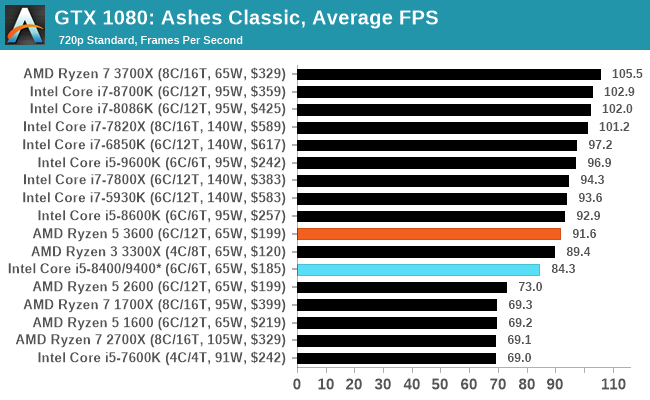 |
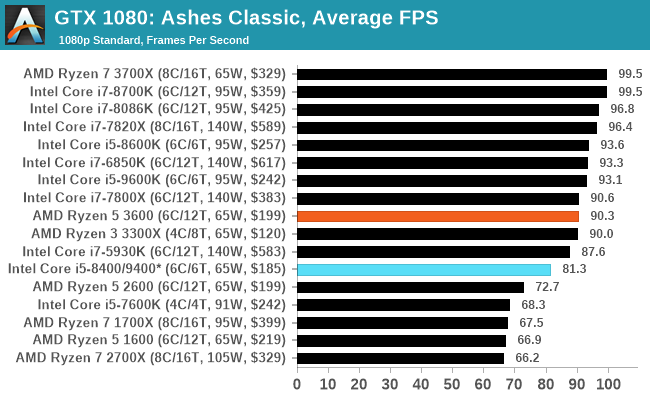 |
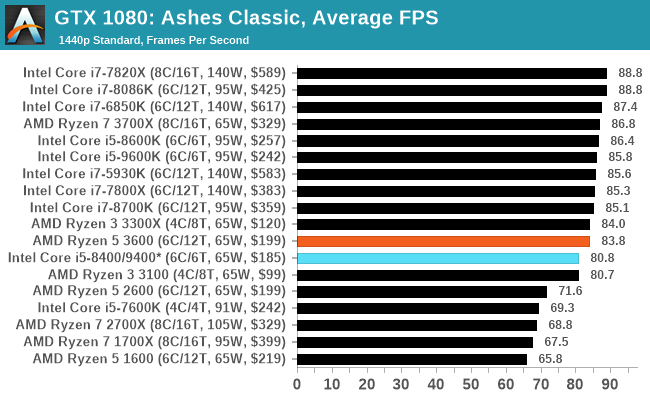 |
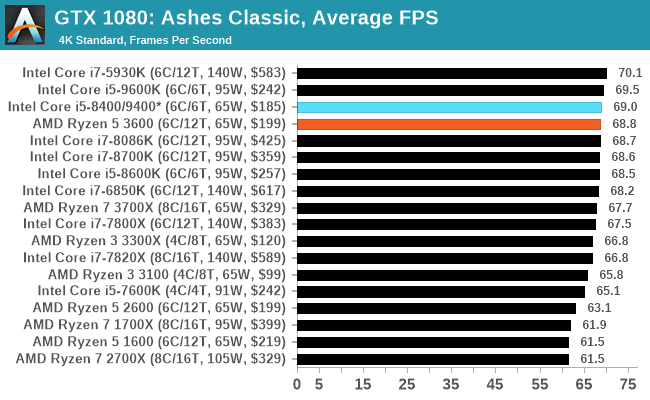 |
| 95th Percentile | 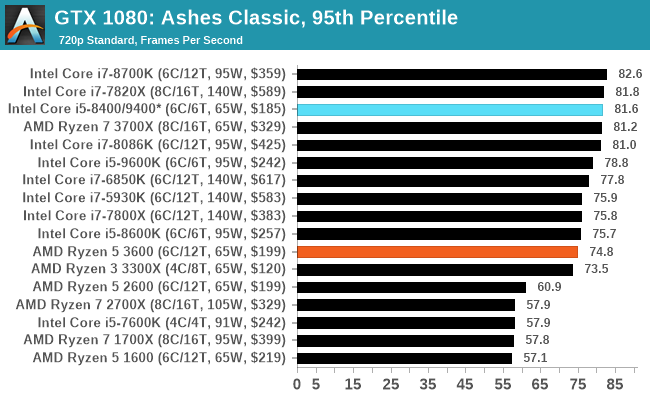 |
 |
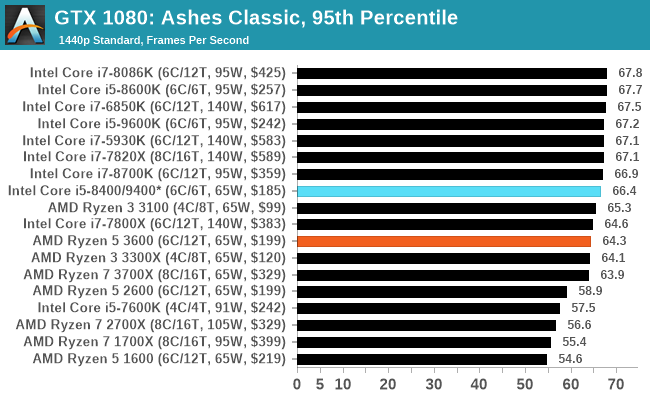 |
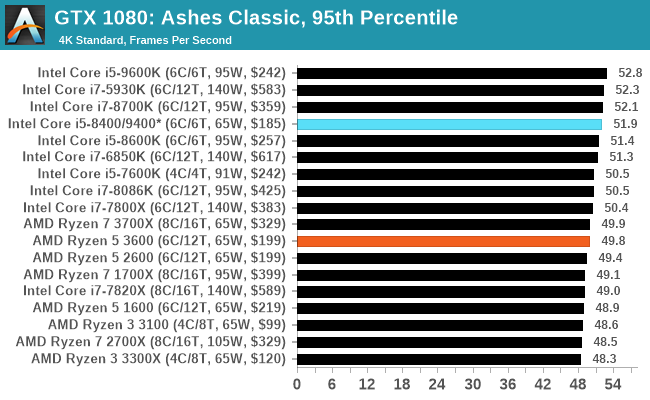 |


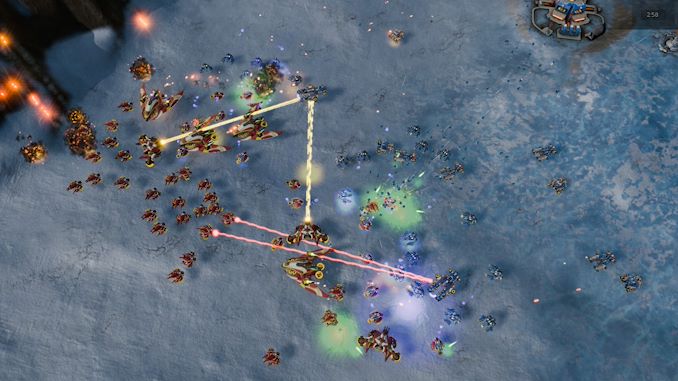









114 Comments
View All Comments
steve wilson - Tuesday, May 19, 2020 - link
They do it to make it a fair test. You can easily compare results of other CPU's if you are using the same hardware in the rest of the PC.Meteor2 - Wednesday, May 20, 2020 - link
I was almost that person asking that question; thank you for pointing out a good answer.Irata - Tuesday, May 19, 2020 - link
It is interesting for the average $ 150- 200 CPU buyer since they most likely won‘t have anything close to a 2080ti in their PC.Personally, I also think all reviews should be done using the stock heatsink or alternatively add the aftermarket HSF‘s price to the CPU cost, at least in the low to mid range.
Spunjji - Tuesday, May 19, 2020 - link
How does that better help you evaluate the performance? All it does is tell you what you'd see if you spend $1200 on a GPU and then restrict yourself to last decade's favourite resolution. The differences you observe in that state don't translate to meaningful performance difference in practice.TheJian - Tuesday, May 19, 2020 - link
Scanned page titles, no OCing, crap benchmarks....Moving along.Spunjji - Tuesday, May 19, 2020 - link
We already know that there's not really any point in overclocking Ryzen. Why waste the time on repeating that?msroadkill612 - Tuesday, May 19, 2020 - link
Ian makes an important point imo - the 3600 has been the cheapest foot in the door for zen2. It happens to also be a very muscular 6 core.Folks are starting to get that its about balance, & the whole am4 zen ecosystem leaves Intel for dead.
A little mentioned thing, is intel must run NVME drives thru the chipset - yuk... thats not the same at all - its wasting a lot of what u paid for that boon of a resource.
watzupken - Tuesday, May 19, 2020 - link
Performance vs price is certainly the key reason for people to get the Ryzen 5 3600. At least for myself, I tend to get mid tier CPUs as I don't like to spend too much on a hardware. Historically, I would get Intel i5 consistently due to it price vs performance. I feel most people will be on this same boat where we look for best performance to price. In the case of AMD Ryzen 5 3600, it's got an outstanding value since it performs better than an Intel chip at the same price, and you can further overclock it to push performance. Intel chips at this price point means an OC locked chip.johnthacker - Tuesday, May 19, 2020 - link
So basically, as expected, the Ryzen 3 3300X is the 5 3600's equal on anything that's not embarrassingly parallel, but the 5 3600 is far superior on things like encoding, decoding, and compression that parallelize easily.Oxford Guy - Tuesday, May 19, 2020 - link
"AMD Ryzen 5 3600 Review: Why Is This Amazon's Best Selling CPU?"Lame headline. How about this:
"Stomped: AMD Ryzen 5 3600 Has No Intel Competition In Its Price Bracket"
My headline is more to the point.